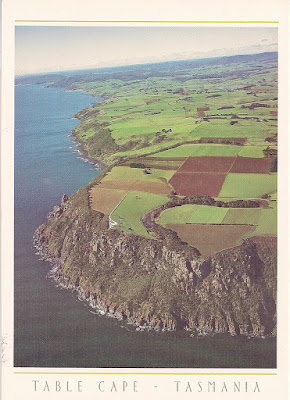Burnie is Australian's newest city, proclaimed by Her Majesty the Queen on 26th April, 1988. The rapid expansion of Burnie, now Tasmania's forth largest town, is based on one of the state's largest industrial enterprises, Associated Pulp and Paper Mills Ltd. Situated on Emu Bay, 148 km west of Launceston, Burnie has a busy deepwater port, which serves the west coast mining centres. Other important industries includes plants for the manufacture of titanium oxide pigments, dried milk, chocolate products and cheese. The area’s natural attractions include forest reserves, fossil cliffs, waterfalls and canyons and panoramic ocean views from nearby Round Hill.
22 July 2022
BURNIE
07 June 2020
DEVONPORT
Named after the county of Devon in England, the state’s third-largest city is strategically sited as a river and sea port. It lies at the junction of the Mersey River and the Bass Strait, on the north coast. As the terminal for a vehicular ferry from Melbourne, Devonport has become a busy industrial and agricultural-export town, as well as a major tourist centre. Devonport has its own airport, and is ideally suited as a visitor base for seeing scenic northern Tasmania.
It is the southern terminus for the Spirit of Tasmania ferries operating between Devonport and Melbourne.
01 March 2020
LAUNCESTON
Launceston was settled in 1804 and is Australia’s third-oldest city. Although it is Tasmania's second largest city and a busy tourist centre, Launceston manages to retain a relaxed, friendly atmosphere. Nestling in hilly country where the Tamar, North Esk and South Esk rivers meet, Launceston is also at the junction of four main highways and has direct air links with Melbourne and Hobart. It is sometimes known as the Garden City because of its beautiful parks and gardens. Launceston has one of the best-preserved early cityscapes in Australia with its elegant Colonial and Victorian architecture and century-old parks. It has a charming ambience of old buildings, parks, gardens, riverside walks, craft galleries and hilly streets lined with weatherboard houses.
15 September 2019
HOBART
Hobart is an enchanting city built around a beautiful harbour and under the spell of nearby majestic Mount Wellington. A strong seafaring flavour and sense of the past give Hobart an almost European air. This feeling heightened in winter when Mount Wellington is snow-capped and temperatures dropped to a crisp 5C. It has an incredible waterfront location, similar to that of her “big sister”, Sydney.
29 November 2015
SPIRIT OF TASMANIA
23 October 2015
WEST COAST WILDERNESS RAILWAY
The West Coast Wilderness Railway is an award-winning railway and wilderness experience located on the west coast of Tasmania. The lovingly restored steam journey connects the historic towns of Queenstown and Strahan and is a wonderful way to experience a combination of Tasmanian wilderness, history, cuisine and hospitality. Three of the original trains now command the railway, built in 1896 (ABT 1), 1898 (ABT 3) and 1938 (ABT 5), and are beautifully restored to their former 28 tonne glory.
The West Coast Wilderness Railway embodies a wealth of stories, stories that tell of the ingenuity, resilience and determination that turned the west coast of Tasmania into one of the wealthiest mining regions in the world.
26 August 2014
TASMANIA
Tasmania has certainly won many more hearts than it can claim square kilometres. It has only 68,000 of the latter, but it crams into them its rugged west, a central plateau broken by steep mountains and narrow river valley, and an eastern coastal region offering a soft 'English' pastoral beauty. Its diverse charms have made it a popular tourist attraction.
The Nut, Historic Stanley Tasmania. The township of Stanley nestles under the massive headland called the Nut. Many old historic sights can be seen, including Joe Lyons' Cottage, Poets' Cottage, Plough Inn and the original Bluestone Grain Store - each with its own unique history.
First sighted by Abel Tasman in 1624, it was later claimed by Capitain Cook for the English and was first settled in 1803. Tasmania was first called Van Diemen's Land; these days it is known as the'heritage island', 'treasure island' or the 'apple isle'. Its economy is basically agricultural, but secondary industries such as tourism and minining are gradually taking over.
TABLE CAPE NORTH WEST TASMANIA Tasmania has some of the most spectacular rural scenery in the world and this region contains features of astonishing beauty
TASMANIAN DEVIL
The Tasmanian devil (Sarcophilus harrisii) is noisy, fierce, potentially vicious and one of only three marsupial carnivores that inhabit the island. Now exclusive to the island state of Tasmania. These animals are adept at climbing, sleeping by day in well hidden dens and emerging at night as efficient scavengers and hunters.









